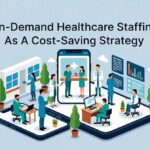Electronic health records (EHRs) have become indispensable to modern healthcare. When implemented and utilized effectively, EHRs can improve patient care, increase practice efficiency, and improve health outcomes. However, EHR systems can become cumbersome without proper management and fail to live up to their potential. Follow these ten best practices to get the most out of your electronic health records.
1- Track Patient Data Over Time
One of the key benefits of EHRs is the ability to have a patient’s full medical history in one place. This comprehensive profile helps you make informed care decisions based on trends and changes. Set up your EHR to present longitudinal views of patient data so you can easily track vitals, test results, medications, diagnoses, and notes across all visits and providers. This avoids having to piece together fragmented information from separate encounters.
2- Implement A Logical Workflow
An EHR system should mirror and optimize your real-world clinical workflow, not complicate or constrain it. Set up an intuitive workflow within your EHR to promote efficiency. For example, customize templates, tabs, shortcuts, macros, and screen flows to match exam sequencing, diagnostic protocols, and documentation needs. The system should adapt to your process, not the other way around. Having an EHR that logically follows your workflow makes adoption much easier.
3- Utilize Data Entry Automation Features
Data entry and documentation can become burdensome if not managed well. Leverage the built-in automation capabilities of your EHR to reduce repetitive manual inputs. For instance, use preference lists, smart phrases, voice recognition, macros, and templates to streamline data entry. Set up shortcuts, hover-overs, and data verification tools to speed up documentation. Automating mundane tasks allows you to focus on patient interactions.
4- Integrate Outside Data Sources
EHRs should not exist in a silo. Integrate your system with outside sources to eliminate redundant data entry. Set up real-time interfaces with pharmacy systems, labs, imaging centers, HIEs, patient portals, wearables, and other systems to pull information directly into the patient record. For example, a healthcare document scanner can automatically scan paper records into the appropriate patient chart. Integration preserves data integrity and provides a seamless workflow.
5- Enable Patient Engagement Features
Today’s EHR systems include tools to engage patients in their own care. There are many opportunities to connect, from patient portals to self-scheduling to secure messaging. Promote patient access to their record, test results, care plans, and educational materials. The ability for patients to view and participate in their care from home improves outcomes and satisfaction.
6- Optimize Templates And Data Displays
Default EHR templates are notoriously suboptimal for many specialties. Work with your vendor to customize templates, layouts, tabs, and data displays to best suit your needs. For example, problem-oriented charting allows physicians to organize by diagnosis versus date. Visit-oriented views work better for episodic care. Ensure key data elements are prominent and unnecessary fields are removed to prevent clutter. The right display and layout drastically improve usability.
7- Promote Interoperability And Data Sharing
Data trapped in siloed systems helps no one. Follow industry standards for interoperability to exchange data securely across systems. Participate in regional health information exchanges (HIEs) so patient information is accessible wherever they seek care. Use Direct protocols to share summaries, referrals, orders, and results with other providers. Adopt certified EHR systems that meet modern interoperability requirements. Seamless data sharing improves coordination and the patient experience.
8- Train Staff On Effective Use
Any EHR system is only as good as the users who leverage it. Provide comprehensive training to staff on properly using the system to support clinical workflows. Conduct periodic refresher training to reinforce best practices, particularly after system upgrades. EHR proficiency results in engaged users who fully utilize capabilities and provide input to refine configurations. Ongoing education is key to long-term success.
9- Maintain Good IT And Security Practices
Complex EHR systems require robust IT support and maintenance. Work closely with your IT team or vendor to ensure optimal uptime and performance. Maintain vendor support contracts for prompt issue resolution. Follow cybersecurity best practices to guard against threats like ransomware. Back up data regularly. Plan for how you will continue operations if the EHR system goes down. Without vigilant IT and security, you quickly lose faith in the EHR.
10- Involve Clinicians In Enhancement Decisions
Continuous improvement is key to EHR adoption. Involve clinical staff in decisions about enhancements and new features. Understand where workflows are breaking down or could be streamlined. Solicit ideas for optimizing templates, shortcuts, order sets, and protocols. Clinicians who feel heard are more likely to fully embrace the system. Ongoing user feedback ensures the EHR evolves with your practice.
Conclusion
Following these best practices allows you to harness the full potential of your EHR investment. A system tailored to clinical workflows, with robust data and interoperability, and engaged users translates to better patient care. Treat your EHR not as a static technology but as a platform for continuously improving efficiency and outcomes. With proper management and optimization, your electronic health records will enhance your practice for years.
Did you find this helpful? Check out our other helpful articles on our website.
Read Also
- Creative Approaches to Alleviating Healthcare Staff ShortagesHospitals and clinics are facing staff shortages, which makes it harder to take care of patients well. Finding simple and useful solutions is very important. Easy changes like flexible work hours, good training, and chances to grow can help staff stay happy. Technology, like online doctor visits and helpful tools, can make work easier. Smart… Read more: Creative Approaches to Alleviating Healthcare Staff Shortages
- Understanding the Role of Sterilizers in Healthcare FacilitiesHave you ever wondered how hospitals keep their equipment safe enough to use on dozens of patients every day? Most people never think about what happens behind the scenes, yet these hidden steps play a huge role in patient safety. Sterilizers are part of that system, working quietly to remove harmful germs before any instrument… Read more: Understanding the Role of Sterilizers in Healthcare Facilities
- Building Healthcare Access Where It’s Needed Most: A Local First ApproachHealthcare shouldn’t depend on where you live. But in the U.S., it often does. If you’re in a big city, you likely have options. If you’re in a small town or an underserved neighbourhood, it’s a different story. To fix this, more healthcare leaders are turning to a local-first approach. That means putting clinics and… Read more: Building Healthcare Access Where It’s Needed Most: A Local First Approach
- Revolutionizing Patient Engagement: Innovative Solutions for Improved Care and Treatment SuccessNavigating healthcare system can often feel overwhelming for patients. Between appointments, prescriptions, and treatment regimens, it’s easy for crucial details to get lost in the shuffle. That’s why effective patient engagement and support solutions are more important than ever. Companies like Serva Health, with their pharma hub services, are stepping up to ensure that patients… Read more: Revolutionizing Patient Engagement: Innovative Solutions for Improved Care and Treatment Success
- On-Demand Healthcare Staffing As A Cost-Saving StrategyThis is an exciting and challenging time for the healthcare industry. Technology is advancing almost faster than humans can keep pace. New legislation is creating fresh challenges for the future of healthcare, and the shifting population demographic continues to place more pressure on healthcare facilities. Amidst these changes, healthcare facilities are facing a critical staffing… Read more: On-Demand Healthcare Staffing As A Cost-Saving Strategy
- The Benefits of Contract Labor Staffing in HealthcareThe most successful healthcare facilities today aren’t just reacting to crises—they are building workforce resilience to withstand them. Unpredictable patient demand, coupled with persistent nursing shortages, has made the traditional staffing model obsolete. Relying on mandatory overtime to cover a sudden surge in capacity is a recipe for high turnover and rising employee burnout relief… Read more: The Benefits of Contract Labor Staffing in Healthcare
- Management Reinforcement for Healthcare Providers in a Shifting SystemHealthcare is changing faster than ever. So, providers are feeling the pressure to keep up. New technology, changing patient needs, and constant rule updates make it tough for managers to stay on top. Strong leadership helps teams work better, give great care, and stay happy in their jobs. Here’s how healthcare leaders can strengthen their… Read more: Management Reinforcement for Healthcare Providers in a Shifting System
- Why Effective Disinfection Remains the Foundation of Public HealthFrom hospitals and schools to transport hubs and food production sites, disinfection is central to breaking the chain of infection and protecting community health. The COVID-19 pandemic highlighted how crucial surface hygiene and environmental control are in reducing the spread of harmful microorganisms. Yet, beyond emergency response, routine and validated disinfection practices remain the cornerstone… Read more: Why Effective Disinfection Remains the Foundation of Public Health









